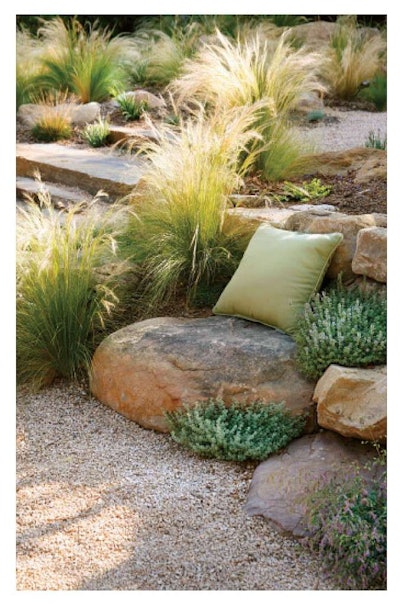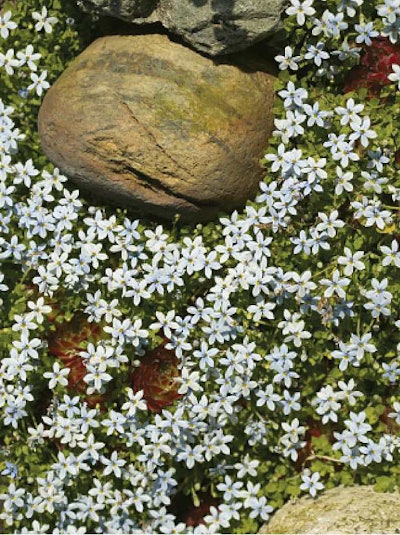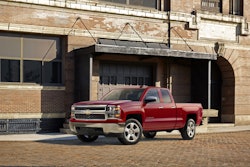
Sustainability is more than a trendy phrase; it’s a concept that can improve your bottom line, expand your client base, and safeguard Mother Nature. Sustainability protects the building blocks of your business: Plants and people.
“Most of us got into this industry because we love the earth,” says Jessi Bloom, owner of NW Bloom Ecological Landscapes in Mill Creek, Washington, and author of Practical Permaculture Design. “We have a responsibility to leave landscapes in a better state than when we found them. We can make our clients happy at the same time, which is a winning situation for everyone.”
What is sustainability?
Defining sustainability is a challenge, because it encompasses many aspects of your business including planning, installation, the use of new technologies and maintenance. But it’s an easy concept to grasp if you think about it as a way to help everything in the landscape work together in a more holistic approach.
Sustainability isn’t just about using compost or organic fertilizers, although that’s a good start. “Sustainable landscapes integrate and nourish plants, water, soil and other elements of the ecosystem while meeting client needs,” says Richard Bajana, organic landscape professional and owner of Richard Landscaping in the DC metro area. “Some of our goals include building up the soil so plants can grow with less intervention, improving the way water is managed, and installing diverse plants to attract and maintain beneficial insect and bird populations.”
The right plant for the right place
One of the most important principles of sustainability is plant selection. “When you choose a plant that’s going to do well from the start in the existing conditions, you’ll need less maintenance in the long run,” Bajana says.
First, do a site inspection and make a list of potential plantings. Think beyond sun exposure and soil types; it’s also about scale, Bajana adds. One example is to reduce maintenance needs by not placing large shrubs where they’ll need to be sheared regularly.

Native plants are good choices because they’re adapted to regional conditions. But they’re not the only choices. “They are not always the best plant for urban areas where the soil has been disturbed,” says Trevor Smith, horticulturalist and lead designer for Land Escapes Design in Arlington, Massachusetts. Hybrids may have longer bloom times, improved disease resistance and compact size to fit into smaller areas. Edible plants, interplanted with ornamentals, are also gaining interest, especially among younger generations who are more concerned with where their food originates.
While you don’t have to become a plant expert, do some research before planting. “If your whole business is going back and fussing with the landscape, you can’t make any money,” Smith says. Ask the nursery specific questions: How has this plant performed in this climate? Does this plant tolerate salt spray? Is it a fast grower? Get a book or download plant selection apps. Read the tags and do internet searches to help expand your plant palate.
Turf trends
Another area of growth for your business is organic lawn care. “Our first step is to do a site inspection and identify problem areas in a lawn,” Bajana says. He may suggest removal of lawn where it is not thriving, and he educates clients about how long it will take to transition remaining lawn to organic care. A soil analysis is key, Bajana notes. “Understand the history of the landscape,” he says. “Each property requires individualized attention.”
Reducing residential lawn size is an increasingly popular movement, and some municipalities offer homeowner rebates to remove lawns. That’s something to educate yourself about if a majority of your business is focused on lawn care. Stay current by attending trade shows and webinars, earning certification from organic lawn care organizations and learning about local legislation.
The management of water
One of the most vital concepts of sustainability is water management. “Water is a precious resource,” Smith says. “Learning how to manage what’s already on site is advantageous to both you and the client.”
Start with common sense. “If you’re planting a garden and you have to change the soil and bring in heavy irrigation, that’s not a very successful garden,” Smith says. Instead, install a rain garden or set up systems to collect and use water generated within the landscape, such as capturing it from the roof. Get educated about permeable pavers, which reduce runoff, or consider the use of a green roof, green wall or a natural swim pond as design elements.
Water features such as dry creek beds are another management technique. “They take water away from the house to facilitate proper drainage, but they also provide a source of water for butterflies and birds,” Bajana says. Consider adding boulders and other natural features to create an attractive yet functional landscape accent.
Regional conditions provide incentives for learning water management techniques. Some cities and states impose a stormwater runoff fee on homeowners and businesses; more are predicted to follow. “Look at your region’s needs,” Smith advises. “Whether it’s flooding or drought, you have an opportunity to grow by adding services that help save your clients water and money.” At the same time, you’ll protect and restore local aquifers.
Creative thinking
 Fragrant Carpet, Pratia angular
Fragrant Carpet, Pratia angularSustainability means thinking outside the box. “There’s a market for quality,” Bloom says. “I’ve had clients go elsewhere on price but they come back because they want quality. You create the demand by educating clients and providing services they can’t get elsewhere.” But don’t only use “sustainability” as a marketing term; consumers are more savvy and will see right through that, Bloom cautions.
Sustainability also means rethinking how or if you will use chemicals. Bloom’s company does not. “There are so many green alternatives,” says Bloom. “If we design landscapes to include groundcover, for example, we are using plants as green mulch. We’ll have landscapes that function with less maintenance and intervention from us.”
The bottom line is that sustainability is a mindshift. “Do you take the time to understand what you’re doing to the soil, plants and ecosystem,” Bloom asks. “What is the legacy you want to leave? We’re not taking temporary care of the land for clients. We’re stewards who must preserve our natural world.”










